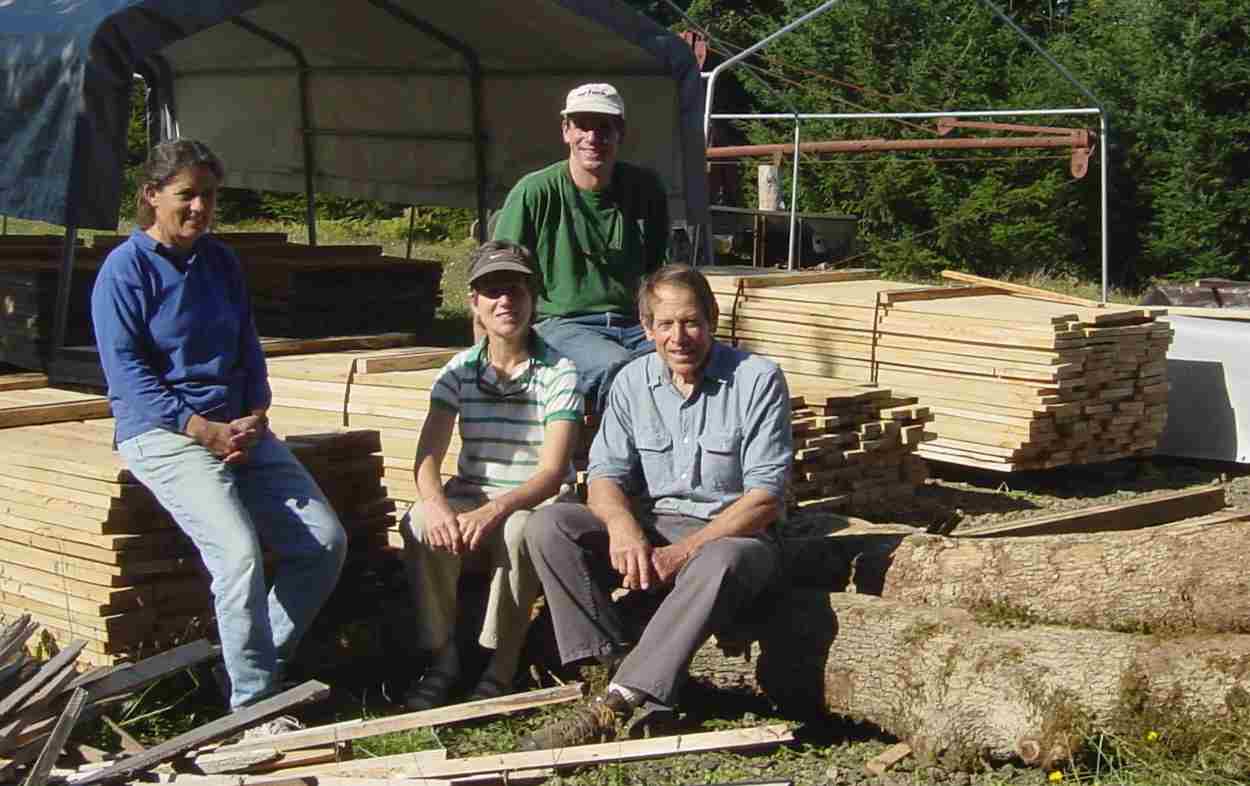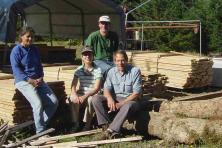In our three family-owned forests in the northern Oregon Coast Range, our work is guided by a simple belief: “If we take care of the land—the land will take care of us.” With climate change, we believe that “caring for the land” extends beyond our property lines to include our playing a responsible role in maintaining the climate on which life—and the success of our tiny family business—depends.
Current evidence leads our family to four conclusions: 1) climate is changing at an unprecedented rate; 2) human action plays a significant role; 3) changing climate is leading to consequences that none of us can afford to ignore; and 4) forests can and must play a significant role in creating and contributing to solutions.
Action is required—but what, on the scale of our little patches of forest, makes most sense?
Our Approach:
- Learning (Understanding Value). We have so much to learn about all aspects of climate and forests that our initial focus is on both increasing our personal knowledge and encouraging and supporting our academic partners to clarify the largest areas of uncertainty and conflicting science. The stakes are too high to let politics compromise the scientific strength and validity of the foundation on which solutions must stand.
- Stewardship Choices (Maximizing Value). Regardless of whether someone pays us to do it, we are making on-the-ground choices that both help address the climate problem (mitigation) and strengthen our forests’ ability to deal with changing conditions (adaptation). We work to store more carbon—through steps such as growing older trees and leaving large wood on the ground—and burn less carbon by increasing energy efficiency and shifting to non hydrocarbon-based energy sources. Examples include drying lumber in our solar powered kiln, processing wood into finished products in the forest, and selling directly to end users to reduce trucking. We prepare for climate impacts through ongoing experimentation with silvicultural approaches that make our forests as resilient as possible to the changes that we believe are coming. Examples include creating mixes of ages and species of trees, maximizing biodiversity (from micro to macro), and the forests’ ability to retain water.
- Measuring (Tracking Value). In the emerging carbon marketplace, internal accountability and external credibility is based on practical, reliable and affordable systems to measure amounts and trends in carbon in our forests. Unfortunately, the complexity of our forests adds to the complexity—and expense—of this essential task. We are developing a system of “rolling” forest cruises that track multiple values, including wood volume and growth, diseases and invasives, and carbon.
- Being Compensated (Capitalizing on Value). The first question visitors always ask about our forests and climate change is, “Are you getting paid for carbon yet?”—followed by, “Why not?” There are three reasons why we place it as our final step: 1) we can’t sell something we don’t yet adequately understand or reliably measure; 2) we have yet to see a proposal to sell our carbon where what we would gain is greater than what we would agree to give up; and 3) most importantly, in keeping with our opening phrase, we believe that we must first concentrate on learning what it means to take care of the land from a climate perspective before we get paid for doing it.
Yes, we actively work to make the transition from the unstable world of being a multi-value forest supported by only one revenue stream to a more stable forest supported by several revenue streams. But we see work that we, and others, need to do before we get there. A key criteria is that we must see evidence that the carbon market system will benefit the atmosphere’s carbon balance in real ways.
In conclusion, our answers are tentative and are far outnumbered by the unknowns—yet we’re optimistic that our home region, the Pacific Northwest, will earn a reputation for leadership and for being its best self when it comes to shaping the evolving relationships between forests and climate. We believe that a key to success is being sure that the focus is as much on the “we” as on the “me.”
Peter and Pam Hayes, with their family, own and care for three working forests and a related wood processing operation, collectively known as Hyla Woods, in the northern Oregon Coast Range. Contact them at peter_hayes@comcast.net or 503-241-6479.


